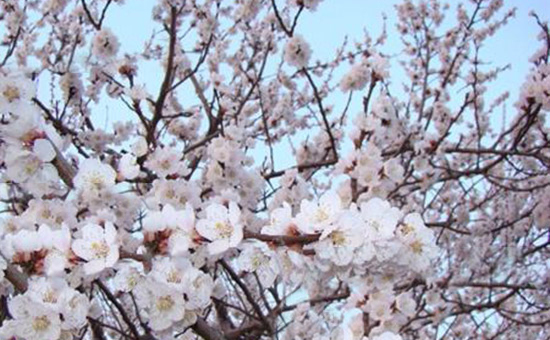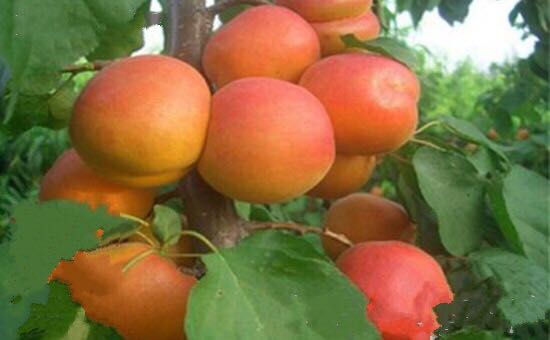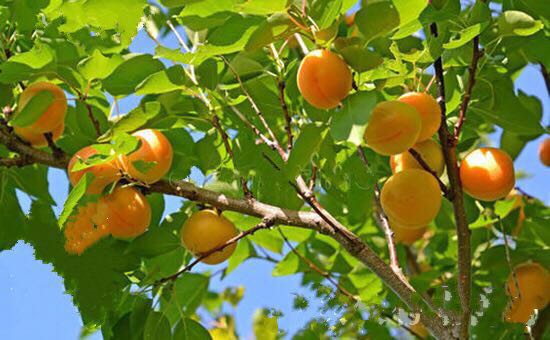Although apricots are barren-tolerant, they do not need fertilizer. Apricot trees grow fast, have large flowers and thick fruit hanging. In order to obtain and maintain high yield, there is no phenomenon of size, rational fertilization is very necessary. Adequate base fertilizer and timely application of fertilizer can ensure the growth of ground and underground parts, flower bud differentiation.

1. Base fertilizer is the main fertilizer in a year. Most of them are slow-acting fertilizers, such as manure, compost, oil residue, human feces and urine, which contain rich organic matter. Some quick-acting nitrogen can also be mixed to accelerate fertilizer efficiency. When calcium superphosphate and bone meal are directly applied to the soil, they are easily combined with calcium and iron in the soil, and are not easily absorbed by apricot trees. In order to give full play to fertilizer efficiency, superphosphate, bone meal, ring fertilizer, human feces and urine and other organic fertilizers should be accumulated and matured, and then used as base fertilizer. After base fertilizer was applied to soil, a large amount of elements and trace elements absorbed by apricot trees could be supplied continuously for a long period of time, which laid a good foundation for supplementing the consumption caused by flowering and Fruiting of trees, restoring tree vigor and for the next year's results.
Apricot base fertilizer should be applied in autumn, that is, the combination of tillage from September to October should be applied as soon as possible. Because of the high temperature and soil temperature, the cut roots can heal quickly and produce new roots. After fertilizer application, the roots can be absorbed and utilized through microbial decomposition. This is beneficial for increasing carbohydrates and proteins stored in trees, reducing flower bud differentiation and abortion, flowering, fruit setting and shoot growth in the second year. The application of basic fertilizer in early spring also had little effect on apricot trees with strong growth and high nutrient and moisture storage.

2. Topdressing is also called supplementary fertilizer. The effect of base fertilizer is stable and slow. When apricot trees need fertilizer in a short period, they must be supplemented in time to meet the needs of apricot growth and development. Topdressing fertilizer is not only a strong, high-yielding and high-quality fertilizer in that year, but also a foundation for the next year's growth and results. It is an indispensable fertilization link in apricot production.
The number and time of topdressing are related to climate, soil quality and tree age. Generally, high temperature and rainy or sandy soil and fertilizer are easy to lose, and topdressing should be a small amount of many times; conversely, the number of topdressing can be reduced appropriately. The number of top dressing of young trees should be less. With the increase of tree age, the amount of fruit will increase, the growth will slow down, and the number of top dressing will increase, so as to regulate the contradiction between growth and fruit.
The application period of topdressing fertilizer should be based on the growth and development law and phenological period of apricot trees, and in the critical period of nutrition requirement, it can be divided into:
(1) Pre-anthesis fertilizer. After thawing in spring, the available nitrogen fertilizer should be applied in time to supplement the deficiency of nutrient storage in tree body, ensure the flowering uniformity, good pollination and fertilization, improve fruit setting rate, promote root growth and increase the early growth of new shoots.
(2) Fertilizer after anthesis. After flowering, the application of quick-acting nitrogen fertilizer, combined with phosphorus and potassium fertilizer, supplemented the consumption of nutrients during flowering period, improved fruit setting and promoted shoot growth. At this time, the rapid expansion of young fruit and vigorous growth of branches and leaves require a large amount of nitrogen. If the supply is insufficient, not only fruit drop is serious, but also the growth of branches and leaves is hindered.
(3) Flower bud differentiation fertilizer. Also known as hard nucleus period topdressing. Before flower bud differentiation or hard nucleus stage, quick-acting nitrogen fertilizer was mainly applied with phosphorus and potassium fertilizer. Its function is to supplement nutrient consumption of young fruit and shoot growth, promote flower bud differentiation and fruit enlargement, especially for fruit enlargement and embryo and nucleus development of early-maturing varieties. If the nutrition is insufficient at this time, the development of nucleus and embryo is poor, the fruit will not grow much later, and the flower bud differentiation will also be affected.

(4)Accelerating fruit fertilizer. Fifteen to twenty days before harvest, quick-acting potassium fertilizer was mainly applied. The aim is to promote the second rapid expansion of fruits of middle and late maturing varieties, increase fruit size, increase yield, improve fruit quality and increase sugar content.
(5)Fertilizer harvesting. Nitrogen fertilizer was the main fertilizer applied after harvest, combined with phosphorus and potassium fertilizer. This topdressing mainly consumed more nutrients of Middle-Late maturing varieties and trees with weak tree vigor, compensated for the deficit of nutrients caused by a large number of results, restored tree application, increased nutrient accumulation in trees, enriched branches and improved winter resistance, laying a good foundation for high yield in the next year.
Contact: Mr. Ma
Phone: +86-0374-5699688
Tel: +86-0374-5699688
Email: [email protected]
Add: Fine Chemical Industry Park, Jianan District, Xuchang, Henan, China